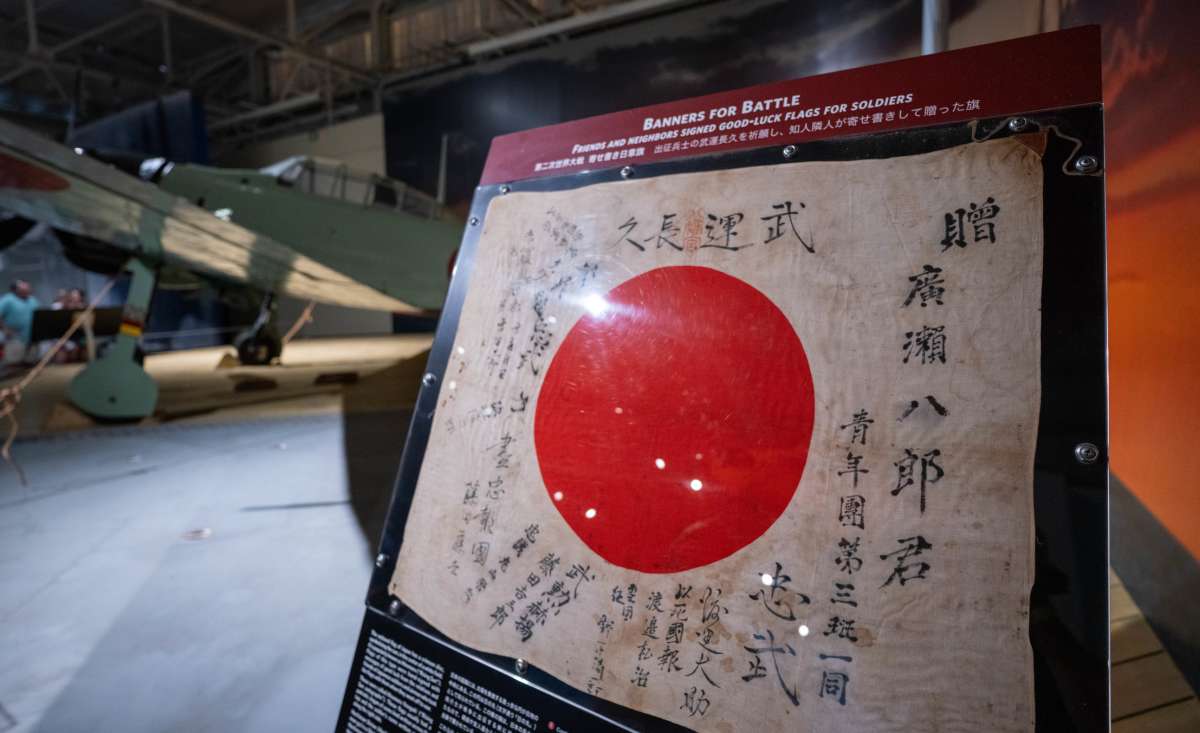US Veteran travels 10,000 miles to return fallen 'enemy' soldier’s family keepsake — all for a 73-year-old promise
'I never did think I owned the flag,' he said.

For 73 years, Marvin Strombo kept a folded silk flag locked inside a glass cabinet. The former U.S. Marine had taken it from the uniform of a Japanese soldier who lay dead on the island of Saipan in 1944. At the time, it was common for American troops to keep such items as wartime souvenirs, but Strombo always knew the flag was different. "I never did think I owned the flag," he told NBC News. The flag was a hinomaru yosegaki — a traditional good luck flag covered with signatures and handwritten messages from loved ones, as per Reuters. Friends and neighbors would inscribe them before a soldier left for war, a parting gift to carry into battle.
The one Strombo picked up that day carried 180 names from a small tea-growing village in Japan, belonging to a young man named Yasue Sadao. "I promised him at that time I would return the flag someday to the family," Strombo said. For decades, he displayed it in his Montana home, always mindful of the vow to honor the fallen soldier. He fought in other battles that chipped away at Japan’s hold in the Pacific, but it was Saipan and the flag that stayed with him. In 2012, he was connected with the Obon Society, an Oregon nonprofit that helps American veterans return such flags to Japanese families. Researchers traced the names back to Higashishirakawa, a 2,300-person mountain village 200 miles west of Tokyo. There, they found Sadao’s surviving siblings, including his 89-year-old brother Tatsuo and two sisters.

On August 15, 2017, Strombo traveled more than 10,000 miles from Portland to Japan to fulfill his vow, placing the calligraphy-covered flag in the hands of Sadao’s siblings. It was an emotional moment not just for the family, but for the entire village whose names were stitched into its history. For the family, the flag was the first tangible trace of their brother in 73 years. Japanese authorities had given them nothing but a wooden box filled with stones, a symbolic substitute for the remains they never received. Just like them, thousands of families across Japan still live without answers. As per a 2021 report by Forensic Science International, remains of nearly half of the 2.4 million Japanese soldiers who died overseas during World War II have never been returned home.

Tatsuo remembered the last day he saw his brother in 1943. A year after he left, the family was told only that he had died somewhere in the Marianas on July 18, 1944, at age 25. "That’s all we were told about my brother, and we could only imagine what might have happened," Tatsuo said. For decades, the family wondered whether he had died at sea. Twenty years ago, Tatsuo even traveled to Saipan himself, standing on its shores to picture what his brother endured, but there were no answers. Now, Strombo could finally show the family roughly where their brother fell, could tell them he died on the ground and not at sea, and could describe the mortar blast that likely took his life. "The flag will be our treasure. It’s like the war has finally ended, and my brother can come out of the limbo," Tatsuo said.
More on Scoop Upworthy
Dad of fallen soldier breaks down in tears listening to son's final message before his death
Woman launches effort to visit graves of fallen soldiers on Memorial Day when their families cannot
Dutch woman 'adopted' a grave and looked after a soldier's soul for 75 years: 'All those boys...'
This article originally appeared 1 month ago.
 Share on Facebook
Share on Facebook





